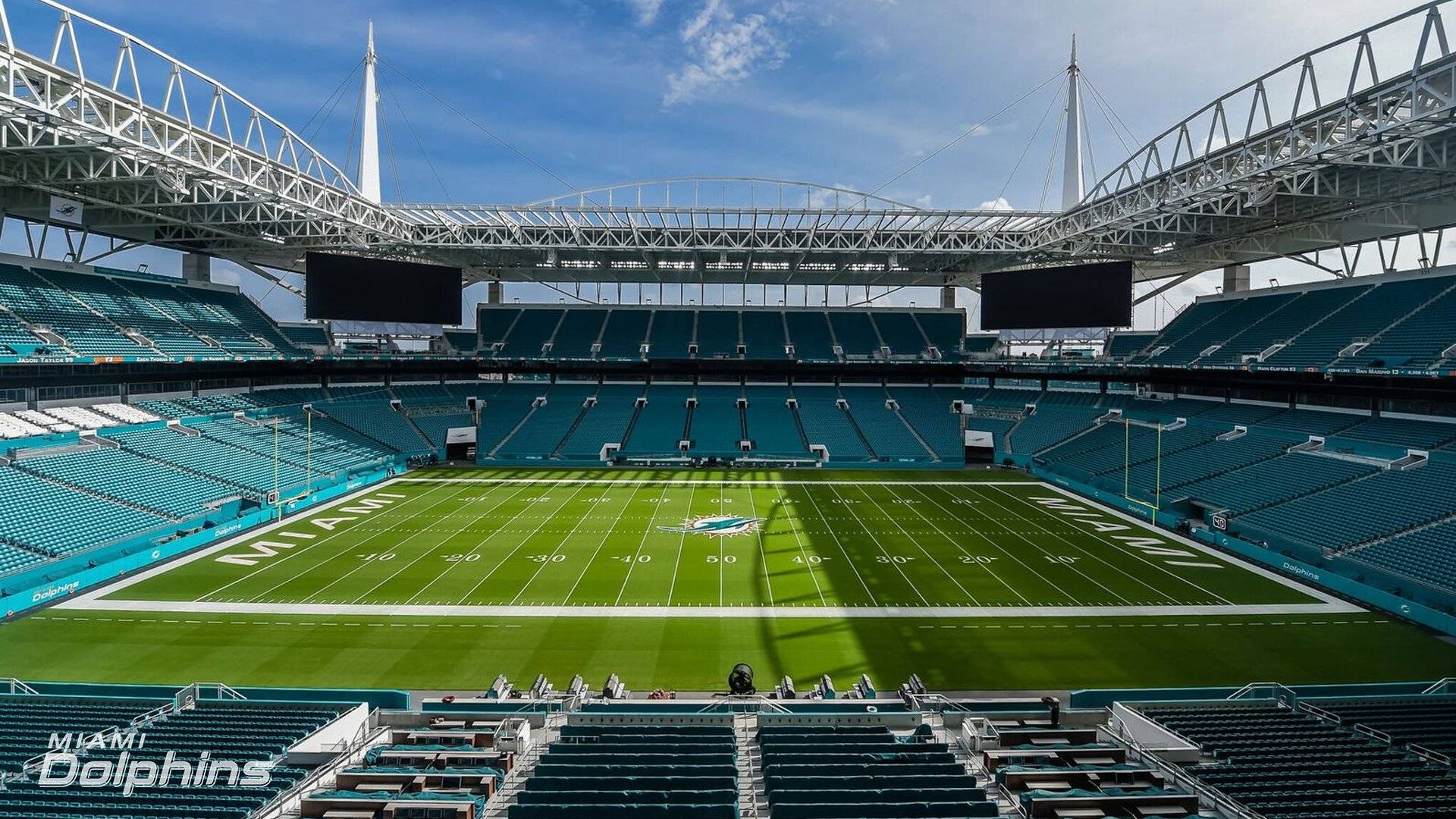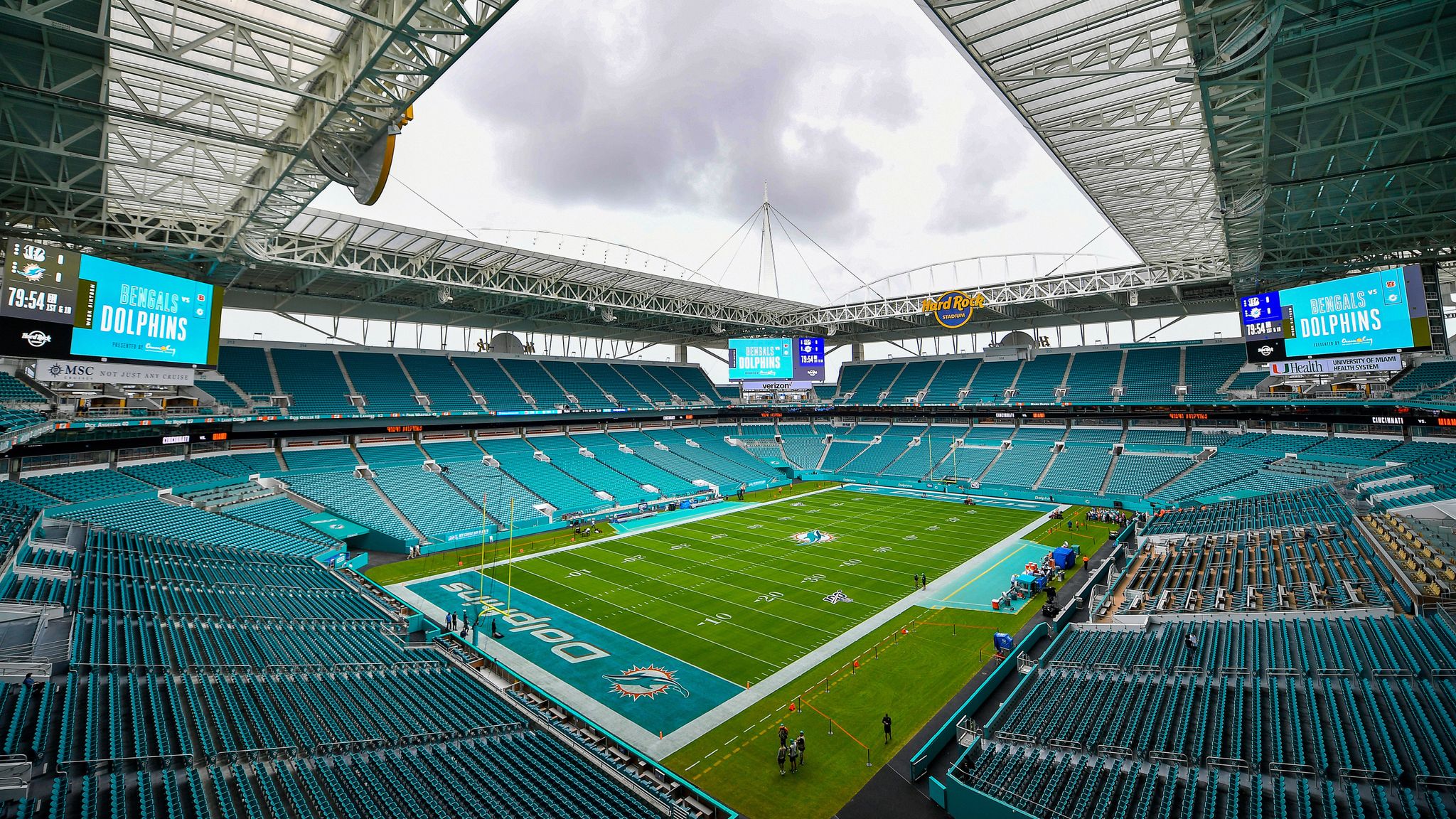
BREAKING NEWS: MIAMI DOLPHINS TO BUILD COLLEGE FOOTBALL’S NEW CATHEDRAL! HARD ROCK STADIUM MEGA-EXPANSION OF $175 MILLION APPROVED….
BREAKING NEWS: MIAMI DOLPHINS TO BUILD COLLEGE FOOTBALL’S NEW CATHEDRAL! HARD ROCK STADIUM MEGA-EXPANSION OF $175 MILLION APPROVED…
MIAMI GARDENS, FL — In a historic and visionary decision, the Miami Dolphins organization has officially announced a $175 million mega-expansion of Hard Rock Stadium, transforming the iconic NFL venue into what officials are calling “college football’s new cathedral.” This ambitious project has been approved and is set to break ground later this year, aiming to reshape the landscape of collegiate athletics in South Florida.
The expansion, greenlit by Dolphins owner Stephen Ross and unanimously backed by city officials and the NFL franchise’s executive board, is designed to accommodate the surging popularity of college football in the region, particularly the University of Miami Hurricanes, who share the venue. The move also comes amid broader efforts to position Miami as a premier destination for major NCAA events—including bowl games, playoff semifinals, and potentially a national championship.
“This is more than a renovation—it’s a reinvention,” Ross said at a press conference on Monday morning. “We’re creating a space where college football fans can experience the game at a level that matches the passion they bring every Saturday. Hard Rock Stadium will become the beating heart of college football in the South.”

Expansion Highlights
The $175 million investment will include a suite of cutting-edge features designed to blend the prestige of professional football with the pageantry of the college game:
- 30,000-square-foot College Football Hall of Fame Wing: A state-of-the-art space dedicated to honoring legends of the NCAA, with interactive exhibits, memorabilia, and rotating displays.
- Premium Student Sections: A new tiered student seating area with built-in fan experiences, upgraded sound systems, and dedicated tunnels for pregame runouts.
- Campus-Style Tailgating Zones: Enhanced tailgate environments mimicking the best on-campus traditions from around the country, complete with food trucks, marching band performances, and fan zones.
- LED Scoreboard Overhaul: A massive 360-degree LED scoreboard ring will be installed to enhance game-day visuals, replays, and crowd interaction.
- NCAA Locker Room and Facilities Upgrades: Separate high-end locker rooms, training facilities, and media rooms specifically for college football teams will be integrated into the stadium’s infrastructure.
- Expanded Capacity: Seating will increase from approximately 65,000 to just over 70,000, allowing for even larger attendance at bowl games and high-stakes college football matchups.
Local and National Impact
The University of Miami, which has played at Hard Rock Stadium since 2008, is expected to be the primary collegiate beneficiary of the upgrade. Athletic Director Dan Radakovich praised the initiative as “a transformative moment for Hurricanes football.”
“This expansion project isn’t just good for Miami—it’s monumental for the ACC and all of college football,” Radakovich said. “We’ll now have a home field that doesn’t just match the standard of top-tier programs, but redefines it.”
Local leaders also hailed the project for its expected economic and cultural benefits. According to city officials, the expansion could create over 1,200 temporary construction jobs and 300 permanent stadium operations positions. With the new infrastructure in place, Miami is projected to host a wider slate of NCAA events, including College Football Playoff games, major neutral-site matchups, and an increased number of high-profile bowl games.
Mayor Rodney Harris of Miami Gardens emphasized the project’s potential to elevate the city’s national profile: “Hard Rock Stadium has already put Miami Gardens on the map. Now, we’re making history—again. This expansion sets a new bar for what a football stadium can be, not just for pros, but for the next generation of stars.”

Timeline and Funding
Construction is slated to begin in February 2026, with completion expected ahead of the 2027 college football season. Stadium operations will continue during the NFL and college football seasons with minimal disruptions, according to developers.
Funding for the expansion is being sourced from a mix of private investment by Stephen Ross and additional contributions from the Miami Dolphins franchise. No taxpayer money will be used, a point Ross emphasized during his announcement.
“This is a privately funded commitment to the future of the game,” Ross said. “We’re not just investing in concrete and steel—we’re investing in legacy, culture, and the unrivaled spirit of college football.”
Reactions Across the Nation
The announcement has sent shockwaves across the NCAA and NFL landscapes. Former Hurricanes players like Ed Reed and Ray Lewis praised the move, while national analysts began speculating whether Miami might become the default host city for major postseason games.
“This is a power play,” said Kirk Herbstreit on ESPN’s College GameDay. “You’re not just talking about upgrading a stadium—you’re changing the center of gravity in college football.”
Fans are already buzzing on social media, with the hashtags #CollegeFootballCathedral and #HurricaneHeaven trending nationwide just hours after the announcement.
With this bold $175 million investment, the Miami Dolphins are not just building a stadium—they’re building a legacy. As college football continues to grow in scope and spectacle, Hard Rock Stadium’s transformation is set to become a defining symbol of the sport’s evolution.
Leave a Reply